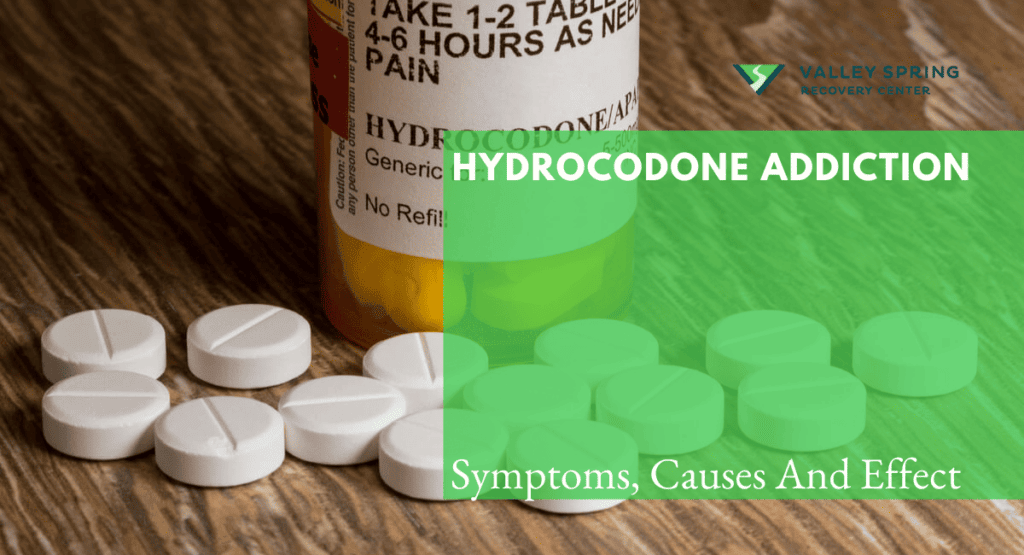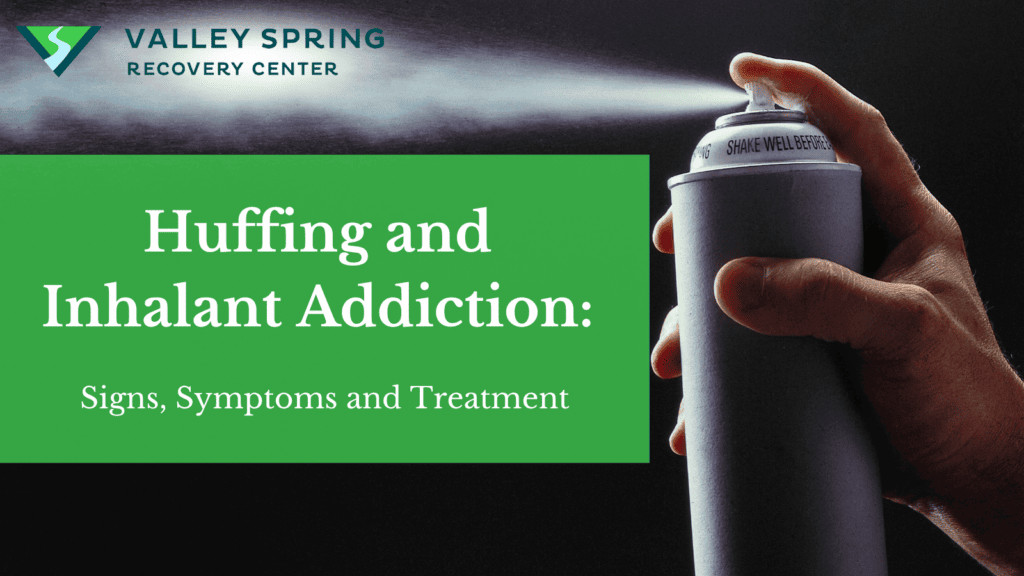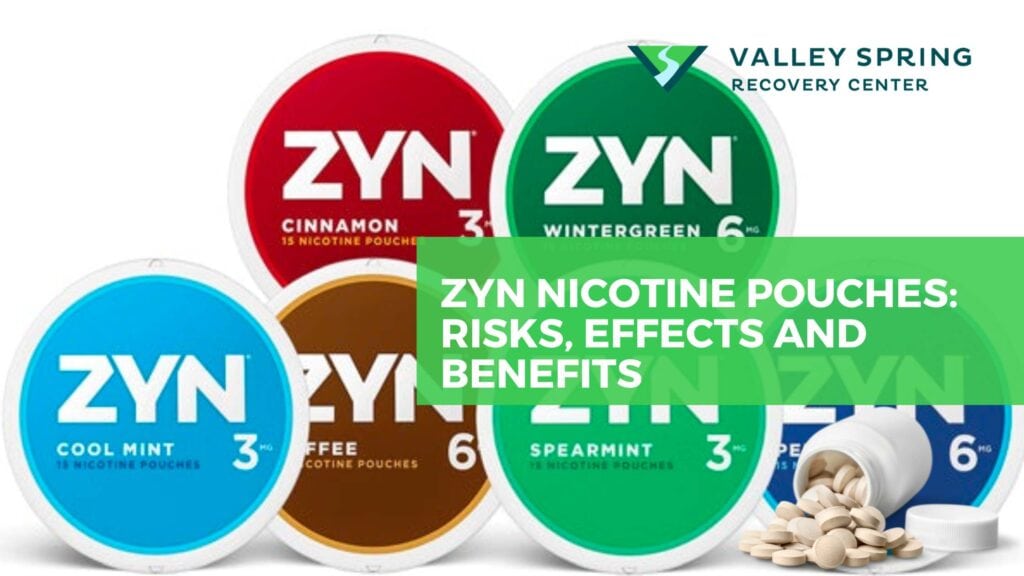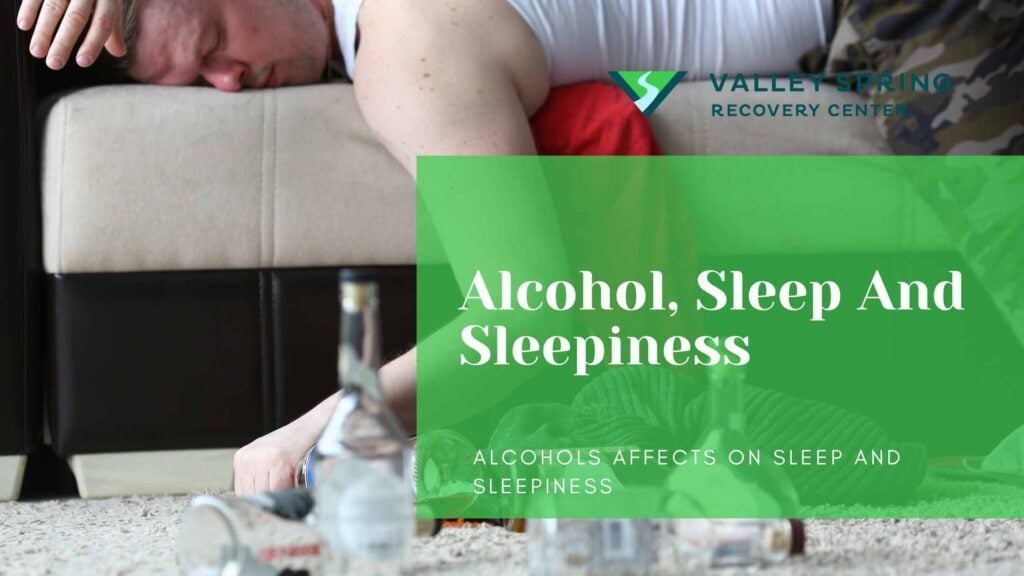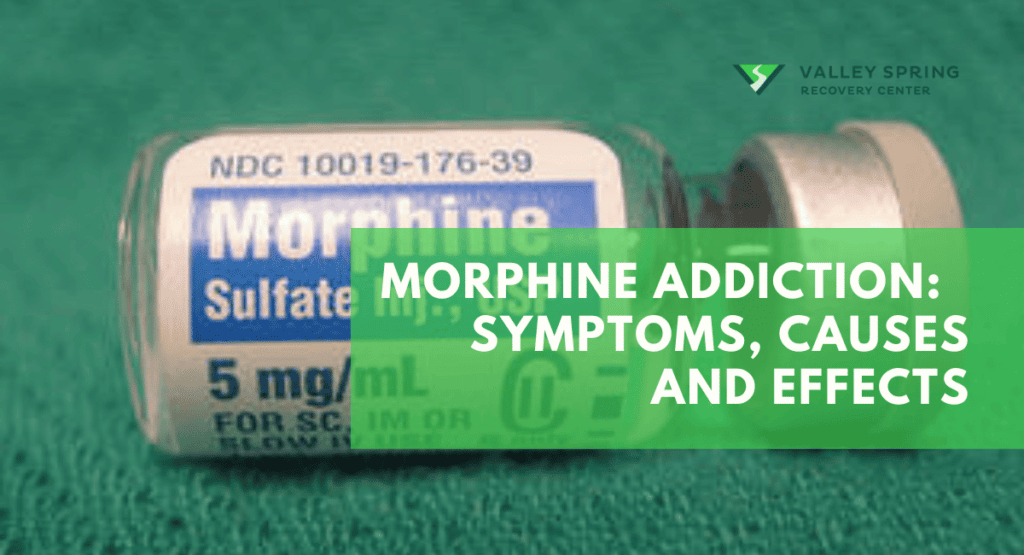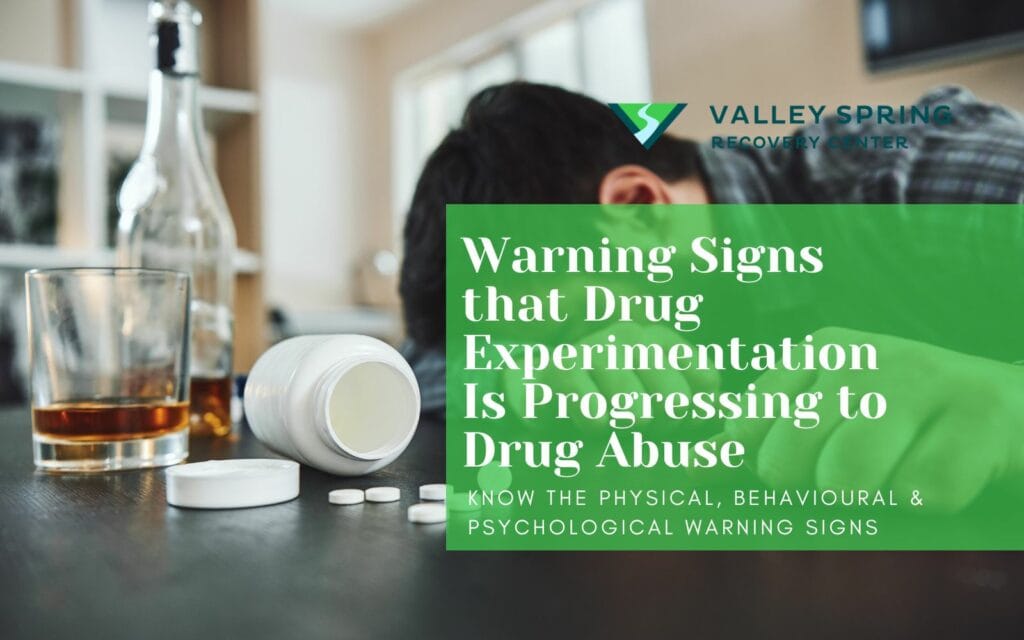Hydrocodone addiction is a serious condition characterized by a compulsive and uncontrollable need to use the drug, despite negative consequences. Hydrocodone is an opiate commonly prescribed for the relief of moderate to severe pain and is often combined with other medications such as acetaminophen.
Like other opioids, hydrocodone works by binding to specific receptors in the brain and spinal cord, blocking pain signals and producing feelings of euphoria and relaxation. However, it also carries a significant risk of addiction and abuse with more than 56,000 deaths involving prescription opioid pain relievers such as Vicodin a form of hydrocodone in 2020.
The symptoms of hydrocodone addiction include cravings for the drug and an escalating tolerance, leading to the loss of control over its use and potential withdrawal symptoms when attempting to stop.
The causes of hydrocodone addiction can be attributed to a combination of factors, including genetic predisposition, environmental influences, chronic pain management, and the misuse or overuse of prescription medications, which can lead to dependence and addiction.
The effects of hydrocodone addiction may include deteriorating physical and mental health, strained relationships, poor work or academic performance, financial difficulties, legal troubles, and an overall decline in general well-being.
What is Hydrocodone Addiction?
Hydrocodone addiction is a condition in which a person becomes physically and psychologically dependent on hydrocodone, which is a powerful opioid medication.
Hydrocodone addiction can develop when the drug is used for an extended period or in higher doses than prescribed. Over time, the body becomes tolerant to the effects of the drug, and individuals may require higher doses to achieve the same level of pain relief or euphoria. This can lead to a cycle of increasing use and dependence. Hydrocodone opiate addicts will use the drug despite the negative consequences it causes.
What are the Signs and Symptoms of Hydrocodone Addiction?
Hydrocodone addiction can manifest through various signs and symptoms, including cravings for the drug, increased tolerance, loss of control over use, and neglect of responsibilities. Below are what you can expect:
- Cravings for the drug
- Needing larger doses to achieve the desired effects
- Inability to control or reduce drug use
- Spending a significant amount of time obtaining, using, or recovering from the effects of hydrocodone
- Neglecting responsibilities at work, school, or home due to hydrocodone use
- Continued use of hydrocodone despite negative consequences
- Withdrawal symptoms when attempting to quit or reduce use
- Development of tolerance to hydrocodone’s effects
- Social withdrawal and isolation
- Changes in mood or behavior, such as irritability, agitation, or depression
Experiencing one or more of these symptoms does not necessarily indicate an addiction, but if you or someone you know is exhibiting these signs, it is important to seek professional help for further assessment and guidance.
What are the Causes of Hydrocodone Addiction?
The causes of hydrocodone addiction are multifaceted and can involve various factors. Some potential causes and contributing factors to hydrocodone addiction include:
1. Biological Factors
Genetic predisposition can influence an individual’s susceptibility to addiction. Some individuals may have genetic variations that affect the way their brain responds to hydrocodone, making them more vulnerable to developing addiction.
Additionally, individual differences in brain chemistry and physiology can impact how hydrocodone interacts with the brain’s reward system and neurotransmitter pathways. For example, certain individuals may experience a heightened release of dopamine, a neurotransmitter associated with pleasurable feelings, in response to hydrocodone use, leading to a stronger reinforcing effect.
Moreover, factors such as age, gender, and overall physical health can influence how the body processes and metabolizes hydrocodone, potentially impacting its addictive potential. The interplay of these biological factors contributes to the individual variability in susceptibility to hydrocodone addiction.
2. Environmental, Social, and Cultural Factors
Individuals who reside in communities with high rates of drug availability or have easy access to prescription medications may be more likely to engage in hydrocodone misuse. Social factors, such as peer influence and social norms, can also influence hydrocodone use. If someone’s social circle includes individuals who misuse or abuse drugs, they may be more likely to experiment with hydrocodone or develop addiction.
Cultural factors like societal attitudes towards drug use and the normalization of prescription medications, can impact the perception and acceptance of hydrocodone use. Additionally, socio-economic factors, stressors, and lack of supportive resources or treatment options can contribute to the development and maintenance of hydrocodone addiction within specific communities or populations.
3. Psychological Factors
Individuals with certain psychological characteristics or conditions may be more susceptible to addiction. For example, individuals with untreated or poorly managed mental health disorders, such as anxiety, depression, or post-traumatic stress disorder (PTSD), may be at a higher risk. They may turn to hydrocodone as a means of self-medication to alleviate emotional distress or to cope with underlying psychological issues.
4. Prescription Practices
Overprescribing or inappropriate prescribing of hydrocodone can contribute to the development of addiction. Individuals who receive higher doses or longer durations of hydrocodone treatment may be at a higher risk.
5. Previous Substance Abuse
Previous substance abuse can increase the risk of hydrocodone addiction. Individuals who have a history of substance abuse, whether it involves alcohol, opioids, or other drugs, may be more vulnerable to developing addiction to hydrocodone. The brain’s reward system can become sensitized through previous substance abuse, making individuals more prone to seeking out and responding to the pleasurable effects of hydrocodone.
6. Reinforcing Effects
Hydrocodone can produce pleasurable and rewarding effects, such as pain relief and feelings of euphoria. These effects activate the brain’s reward system, leading to a desire for repeated use of the drug. Over time, the brain adapts to the presence of hydrocodone, and individuals may require higher doses to achieve the same desired effects. This cycle of reinforcement can lead to a pattern of compulsive drug-seeking behavior, where individuals continue to use hydrocodone despite negative consequences.
7. Co-occurring Disorders
Individuals with co-occurring mental health disorders, such as anxiety, depression, or post-traumatic stress disorder (PTSD), may be at a higher risk of developing hydrocodone addiction. Some individuals may use hydrocodone as a form of self-medication to cope with underlying emotional or psychological issues.
8. Chronic Pain Management
Hydrocodone is commonly prescribed for the management of chronic pain. Individuals who experience chronic pain conditions may be at a higher risk of developing hydrocodone addiction due to long-term exposure to the medication and the challenges associated with managing pain effectively.
9. Stress and Coping Mechanisms
High levels of stress and inadequate coping mechanisms can contribute to the misuse of hydrocodone as a means of escape or self-medication. Hydrocodone’s ability to induce feelings of relaxation and euphoria may provide temporary relief from stress or emotional discomfort.
It’s important to recognize that addiction is a complex interplay of multiple factors, and the specific causes can vary from person to person. Additionally, while these factors can contribute to the development of hydrocodone addiction, not everyone exposed to them will develop an addiction. Individual susceptibility and personal circumstances also play a significant role.
What are the Effects of Hydrocodone Addiction?
Hydrocodone addiction can have a wide range of effects on individuals. Here are some common effects associated with hydrocodone addiction:
1. Physical Effects
- Drowsiness and sedation
- Slowed breathing and respiratory depression
- Nausea and vomiting
- Constipation
- Headaches
- Dizziness and lightheadedness
- Impaired coordination and motor skills
- Increased pain sensitivity (hyperalgesia)
- Tolerance and dependence, requiring higher doses for the same effect
- Withdrawal symptoms upon discontinuation, such as muscle aches, restlessness, insomnia, and cravings
2. Psychological Effects
- Euphoria and feelings of well-being
- Relaxation and sedation
- Altered mood and emotions
- Mental clouding and impaired cognitive function
- Confusion and disorientation
- Anxiety and agitation
- Depression and mood swings
- Impaired judgment and decision-making
3. Social Effects
- Strained relationships with family and friends
- Social isolation and withdrawal from social activities
- Neglect of responsibilities at work, school, or home
- Financial difficulties and legal issues related to obtaining and using hydrocodone
- Increased risk of accidents or injuries due to impaired judgment and coordination
4. Health and Safety Effects
- Risk of overdose, which can be life-threatening
- Damage to vital organs, such as the liver or kidneys, with long-term use
- Increased vulnerability to infections and weakened immune system
- Interactions with other medications or substances, leading to adverse effects
- Impact on overall quality of life and well-being
It’s important to note that the effects of hydrocodone addiction can vary from person to person and may depend on factors such as the dosage, frequency of use, individual tolerance, and co-occurring conditions.
Why Do People Consume Hydrocodone?
People consume hydrocodone for legitimate medical reasons as prescribed by a healthcare professional. Hydrocodone is primarily used to relieve moderate to severe pain, such as pain following surgery or due to chronic conditions like cancer.
However, it’s important to note that some individuals may misuse hydrocodone for non-medical purposes. Opioids, including hydrocodone, can produce feelings of euphoria and relaxation, which can be appealing to some individuals seeking to experience a “high” or alleviate emotional distress. Misuse of hydrocodone involves taking it in higher doses or more frequently than prescribed, without a legitimate medical need.
Unfortunately, the pleasurable effects of hydrocodone can also lead to misuse, dependence, and addiction. It is crucial to use hydrocodone only as prescribed and under the supervision of a healthcare professional to minimize the risk of developing an addiction or experiencing harmful side effects.
How Do People Consume Hydrocodone?
Hydrocodone is typically consumed orally in the form of tablets or capsules. It is often combined with other medications, such as acetaminophen, and marketed under various brand names.
When prescribed by a healthcare professional, the specific dosage and frequency of hydrocodone consumption will be determined based on the individual’s condition and pain management needs.
Hydrocodone should be taken with a full glass of water. It can be taken with or without food, although taking it with food may help reduce stomach discomfort.
Some individuals who use Hydrocodone illegally may dissolve the drug and inject with. This method is very rare and carries more risks for complications, including infections, vein damage, tissue damage, blood-borne diseases, and overdose.
What is the Difference Between Hydrocodone and OxyContin (Oxycodone)?
Hydrocodone and OxyContin (oxycodone) are both opioids used for pain management, but there are differences between them, including their strength and potential for addiction.
1. Potency
OxyContin (oxycodone) is generally considered to be more potent than hydrocodone. It is available in various strengths, including higher-dose formulations, whereas hydrocodone is typically available in lower strengths.
2. Formulation
OxyContin is an extended-release formulation of oxycodone. It is designed to provide long-lasting pain relief over a sustained period. Hydrocodone, on the other hand, is usually available in immediate-release formulations that provide more immediate pain relief but with a shorter duration of action.
3. Schedule Classification
OxyContin and hydrocodone are classified differently under the Controlled Substances Act in the United States. OxyContin is classified as a Schedule II controlled substance, indicating a high potential for abuse and addiction. Hydrocodone, in most cases, is classified as a Schedule II or Schedule III controlled substance, depending on the specific formulation and combination with other substances.
4. Addiction Potential
Both hydrocodone and OxyContin have a significant potential for addiction. Prolonged or excessive use of either drug can lead to physical and psychological dependence. Addiction can occur when individuals develop a compulsive need to use the drug despite negative consequences.
Both hydrocodone and OxyContin should be used under medical supervision and according to prescribed dosages to minimize the risk of addiction.
What are the Treatment Options for Hydrocodone Addiction?
The treatment options for hydrocodone addiction typically involve a combination of medical, therapeutic, and support interventions. Here are some common approaches to treating hydrocodone addiction:
1. Detoxification
The first step in treatment is often detoxification, which involves safely managing withdrawal symptoms as the drug is cleared from the body. Medical supervision during detoxification can help alleviate discomfort and ensure safety.
2. Medication-Assisted Treatment (MAT)
Certain medications, such as buprenorphine or methadone, may be used as part of a comprehensive treatment plan. Medication-assisted treatments help to reduce cravings and withdrawal symptoms, allowing individuals to focus on recovery.
3. Behavioral Therapies
Various behavioral therapies are effective in treating hydrocodone addiction. Cognitive-behavioral therapy (CBT) helps individuals identify and change negative thought patterns and behaviors associated with drug use. Contingency management uses positive reinforcement to encourage abstinence, while motivational interviewing enhances motivation to change addictive behaviors.
4. Support Groups
Participating in support groups such as Narcotics Anonymous (NA) or other 12-step programs can provide valuable peer support and a sense of community during recovery. Sharing experiences and receiving support from others who have gone through similar challenges can be beneficial.
5. Individual Counseling
One-on-one counseling with a therapist or addiction counselor can help individuals address underlying psychological issues, develop coping skills, and set goals for recovery. Therapy can also explore triggers and provide strategies to prevent relapse.
6. Dual Diagnosis Treatment
Dual diagnosis treatment is crucial for individuals with hydrocodone addiction and a co-occurring mental health disorder. This integrated approach recognizes the interplay between these conditions and aims to address both simultaneously. By targeting underlying issues, providing comprehensive assessment, and integrating substance abuse treatment with mental health care, dual diagnosis treatment offers a more comprehensive and effective approach.
7. Aftercare Support
Continuing support after the initial treatment phase is crucial for maintaining long-term recovery. This may include ongoing therapy, participation in support groups, and access to resources for relapse prevention.
Treatment should be tailored to address your unique circumstances and may involve a combination of the approaches mentioned above.
Is Tramadol Stronger than Hydrocodone?
Tramadol and hydrocodone are both opioid medications used to manage pain, but their potency and effectiveness can vary from person to person. In general, hydrocodone is considered to be more potent than tramadol. According to the National Center for Biotechnology Information (NCBI), hydrocodone is classified as a Schedule II controlled substance due to its higher potential for abuse and addiction.
It is often prescribed for moderate to severe pain and is available in combination with other medications, such as acetaminophen. Tramadol, on the other hand, is classified as a Schedule IV controlled substance and is generally considered to be a weaker opioid. It is often prescribed for milder to moderate pain. However, individual responses to these medications can vary, and what may be effective for one person may not be the same for another.
What are the benefits of taking hydrocodone for pain relief?
Hydrocodone is a prescription opioid medication primarily used for managing moderate to severe pain. It is particularly effective for patients who have not found adequate relief from other pain medications. A significant benefit of hydrocodone is its ability to provide considerable pain relief, which is essential for patients recovering from surgery, dealing with injuries, or suffering from chronic conditions like arthritis. In some formulations, hydrocodone is also used to suppress coughs. This aspect of hydrocodone can help treat conditions where coughing is a persistent and uncomfortable symptom.
One of the key advantages of hydrocodone is the improvement in the quality of life it offers. Effective pain management enables individuals to engage more fully in daily activities with less discomfort, contributing to a better overall sense of well-being. Generally, hydrocodone is used for short-term pain management, offering relief in the acute phases of pain, such as post-operative recovery. In some cases, hydrocodone is combined with other pain relievers like acetaminophen or ibuprofen, enhancing its pain-relieving effects. However, if abused or taken for non-prescription purposes, hydrocodone can be addictive.
How Often Can You Take Hydrocodone
The frequency at which hydrocodone can be taken depends on several factors, including the individual’s medical condition, the prescribed dosage, and the healthcare provider’s instructions. Hydrocodone is typically prescribed to be taken every 4 to 6 hours as needed for pain relief.
What are the hydrocodone addiction statistics?
The hydrocodone addiction statistics paint a grim picture with the united states as a major abuser. More hydrocodone addiction statistics are listed below:
- The US is the major abuser of hydrocodone.
- Hydrocodone products are the most commonly misused subtype of prescription pain relievers.
- Around 11 million people have used pain relievers without a prescription in 2018.
- Women are more likely than men to use prescription pain relievers.
- Middle-aged women are more likely to die from a prescription opioid overdose than other age groups.
- Friends or relatives were the most common source for those who have misused prescription pain relievers.
Hydrocodone addiction statistics highlight the importance of careful prescribing and monitoring of hydrocodone to mitigate the risk of addiction. The misuse of hydrocodone and other opioids has contributed to the broader opioid crisis, underlining the need for effective pain management strategies that balance the benefits of opioid pain relievers with their potential for abuse and dependence.
Kristy Ashe
All author postsShare This Post

